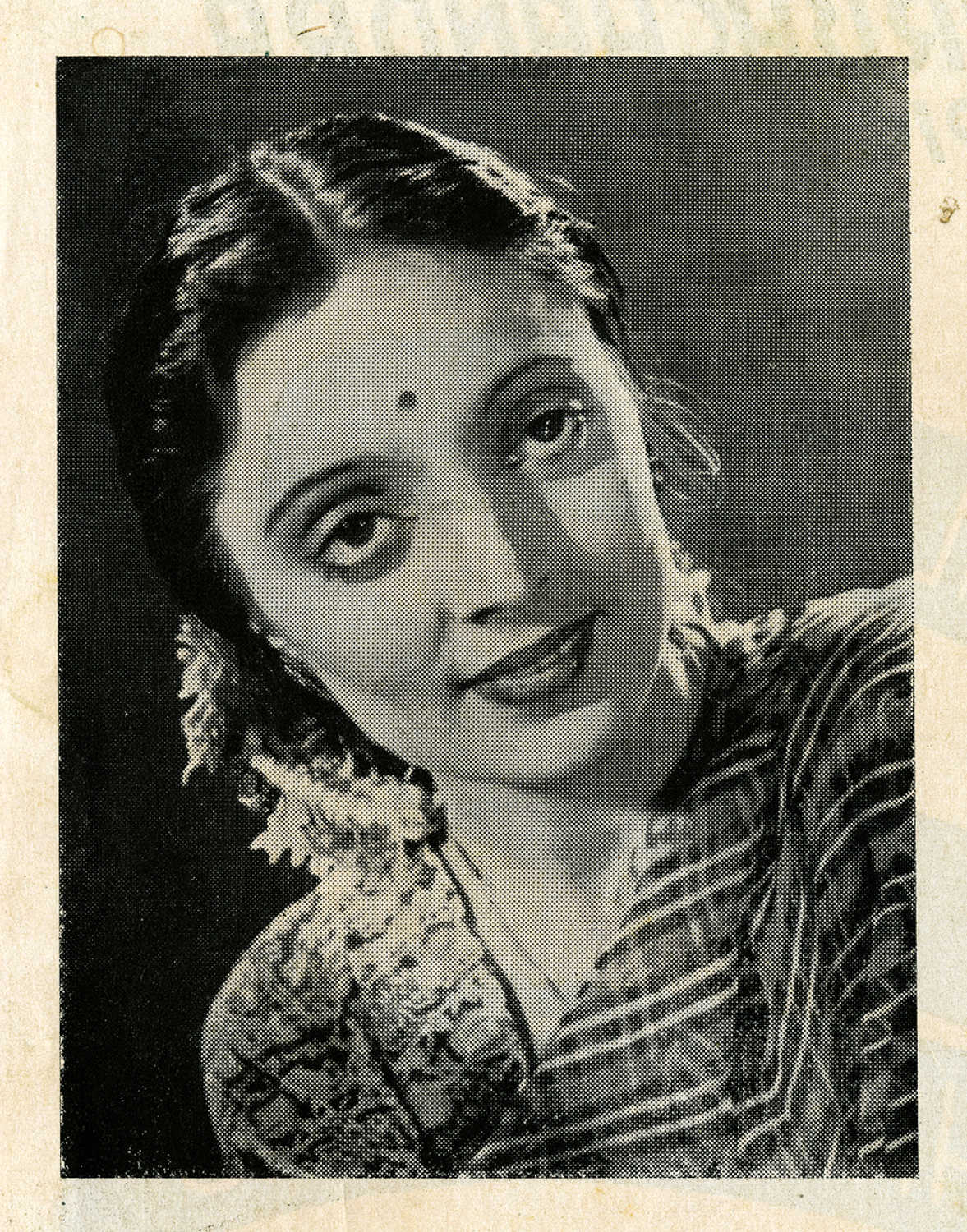On Ashalata Biswas's 101st birth anniversary, her daughter Shikha Vohra speaks about her dynamic mother — how she got her start in the film industry and later became producer.
Ashalata came when beautiful women were rare in movies: Remembers daughter Shikha Vohra
Mumbai - 17 Sep 2017 9:00 IST
Updated : 20:00 IST


Sonal Pandya
In the early days of the Indian talkies, the 1930s, there wasn’t much information around about many of the actors and actresses that graced the silver screen. Such was the case with Mehrunissa who was first seen on the big screen, as Ashalata, in 1935 in films like Sati Toral, Sajeev Moorti and the stunt film Aazadi, produced by the Shakti Movietone studio.
Fortunately for us, Ashalata’s daughter Shikha Vohra was able to shed some light on her mother's early career and provide a few key facts.
First of all, Ashalata's actual birthdate is 17 September, not 17 October as is widely reported online.
Born in 1916, she was the youngest of five siblings. Vohra believes that her mother joined films to help out the family, “She came from a poor family and my grandmother, my nani, was ordinary, she was widowed very early. They were originally from Bhuj and then they migrated to Mumbai in search of work, because where she was there was not much opportunity and that also for a woman alone,” she says.

Ashalata joined films at a young age, just after she had completed her schooling. Interestingly, her good friend Shobhana Samarth also made her debut that same year (1935).
“Shobhana Samarth and my mom, they were classmates and good friends. It could possibly be because Shobhana Samarth was offered movies and she couldn’t do the movies because her father was very strict. My own inkling is that Samarth recommended (my mother). How else would she know anybody in the film industry and that also at that time?,” Vohra contemplates.
Her name was changed to Ashalata for the big screen as was the common practice. For example, Ruby Mayer became actress Sulochana and Fatima Rashid became the leading lady Nargis.
Ashalata did a variety of roles, both as lead and second lead in films like Manmohan (1936) and Jwala (1938). She even acted opposite Prithviraj Kapoor in Deepak (1940). In the film, she played a doctor’s daughter, Bina, who falls for Dr Deepak, a physician with progressive ideals, who doesn’t believe in prolonging his patients’ pain if they are suffering from a fatal disease.
Vohra directed us to a song featuring Ashalata from Master Vinayak’s Brandi Ki Bottle (1939).
Ashalata married music composer Anil Biswas and had her first child when she was 22. Later on as her career waned, Ashalata produced, along with her husband under their banner, Variety Films, films like Ladli (1949), Lajawab (1950) and Hamdard (1953). The two divorced in 1954 and in 1959 Anil married Meena Kapoor, a singer who sang for a few films during the 1950s.
How music director Anil Biswas helped Mukesh sing ‘Dil Jalta Hai’
Vohra says her mother ventured into film production, an area that had few women in it, because she wanted to do something.
“If you knew her, she was very dynamic. She was not the kind who would sit at home and cook or embroider hankies. She was the kind who was very efficient. She had that kind of presence, she would walk into a room and everybody would look at her. She was, of course, stunningly beautiful but she had that aura. I think that time of Durga Khote, Devika Rani, Shobhana Samarth, Leela Chitnis, most of them were already married [sic]. She was in the same category of people, these women were quite forward for their times. They managed both (home and career) and were quite successful,” she says.
Unfortunately today, no copies remain of the films Ashalata produced. The original prints were stored at Famous Studios in Tardeo, which were destroyed in a fire.
In late years, however, Vohra says her mother discovered cooking. “She started suddenly sitting in the kitchen and peeling garlic and all that. She started learning to swim at that time. She used to drive all the way to Cuffe Parade for her swimming lessons. Post 50, women would retire and you’re finished with life. But she had that get-up-and-go thing. You don’t give up on life,” she shares.

And even though she managed to balance both work and motherhood, Ashalata’s children never really discussed anything related to films. Vohra is unable to recall meeting anyone who had worked with her mother. “Shobhana Aunty didn’t work with her in any film, but they were both colleagues because they were working at the same time and they were good friends," Vohra says. "But I think she came at a time when beautiful women were rare in movies because of that taboo of Hindu women joining (films). I don’t know why her name was changed, because she had an exotic name, Mehrunissa, was a lovely name.”
Interestingly, Vohra has written a fictional novel, The Lure of Old Tunes, whose lead characters are an actress, named Meherunissa, and a composer, named Aniruddh. The book follows their turbulent love story. Vohra also hosts successful musical concerts throughout the year dedicated to the musical maestros of the past from her father Anil Biswas to Hemant Kumar.


